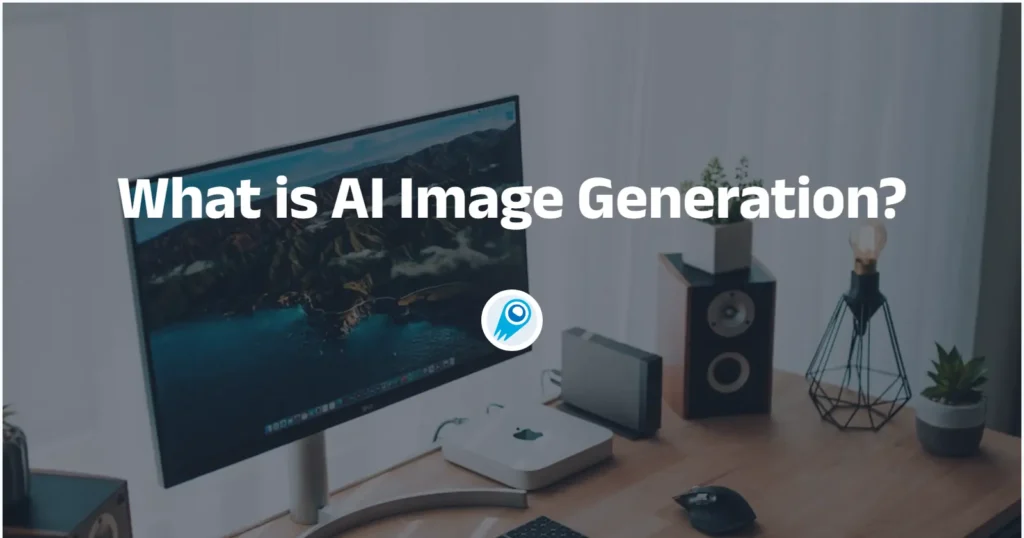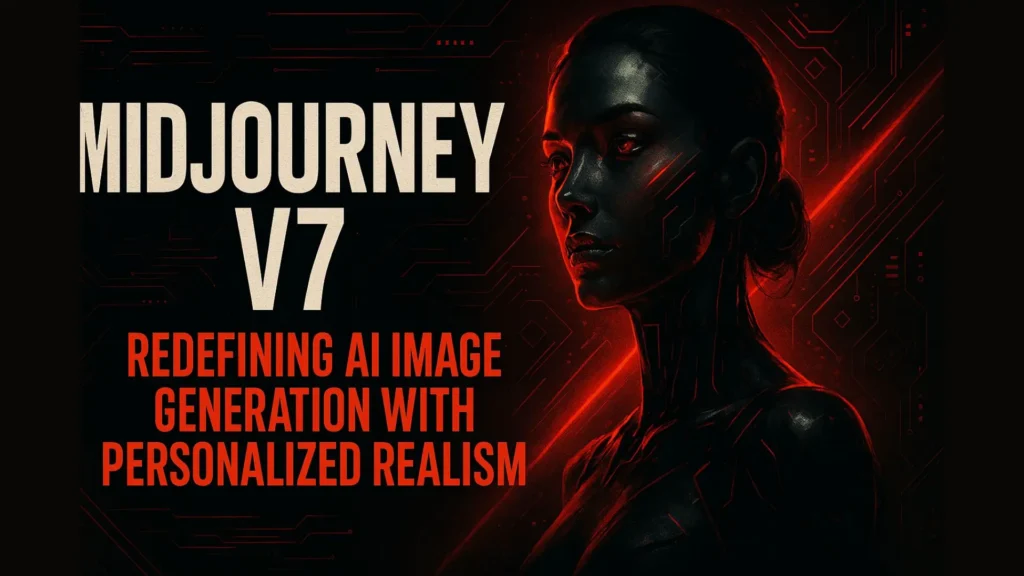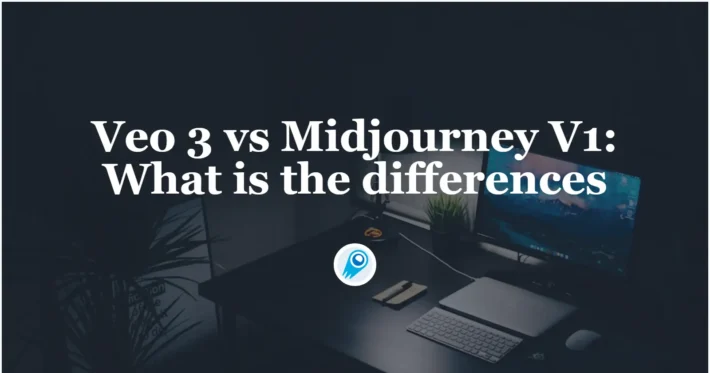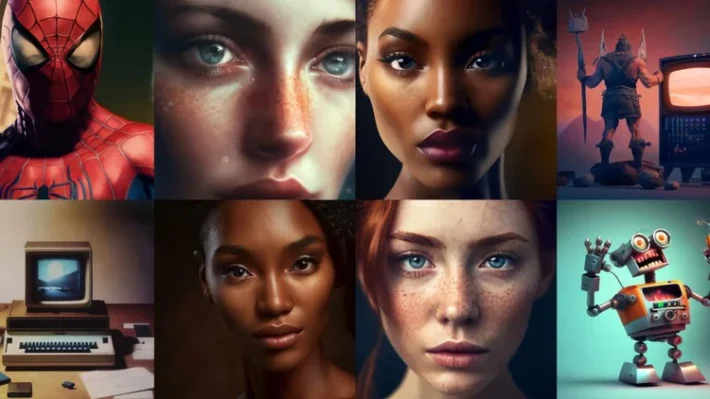What is AI Image Generation? Beginner’s Guide

Artificial Intelligence (AI) has revolutionized numerous industries, and one of its most visually striking applications is AI image generation. This technology enables machines to create images from textual descriptions, blending creativity with computational power. From generating artwork to aiding in medical imaging, AI image generation is reshaping how we perceive and create visual content.

What is AI Image Generation?
AI Image Generation is a field within artificial intelligence that focuses on creating new, realistic images using machine learning models. These models learn patterns from existing images and generate new visuals that resemble the training data. This technology has applications in art, design, gaming, and more.AI Image Generation is a field within artificial intelligence that focuses on creating new, realistic images using machine learning models. These models learn patterns from existing images and generate new visuals that resemble the training data. This technology has applications in art, design, gaming, and more.
The four primary techniques for AI image generation are:
- Variational Autoencoders (VAEs)
- Generative Adversarial Networks (GANs)
- Diffusion Models
- Autoregressive Models (e.g., Transformers)
Let’s delve into each technique
1. Variational Autoencoders (VAEs)
Overview
VAEs are generative models that learn to encode input data into a latent space and then decode from this space to reconstruct the data. They combine principles from autoencoders and probabilistic graphical models, allowing for the generation of new data by sampling from the learned latent space.
How It Works
- Encoder: Maps input data to a latent space, producing parameters (mean and variance) of a probability distribution.
- Sampling: Samples a point from this distribution.
- Decoder: Reconstructs data from the sampled point.
The model is trained to minimize the reconstruction loss and the divergence between the learned distribution and a prior distribution (usually a standard normal distribution).
Code Example (PyTorch)
pythonimport torch
import torch.nn as nn
class VAE(nn.Module):
def __init__(self, input_dim=784, latent_dim=20):
super(VAE, self).__init__()
self.fc1 = nn.Linear(input_dim, 400)
self.fc_mu = nn.Linear(400, latent_dim)
self.fc_logvar = nn.Linear(400, latent_dim)
self.fc2 = nn.Linear(latent_dim, 400)
self.fc3 = nn.Linear(400, input_dim)
def encode(self, x):
h = torch.relu(self.fc1(x))
return self.fc_mu(h), self.fc_logvar(h)
def reparameterize(self, mu, logvar):
std = torch.exp(0.5 * logvar)
eps = torch.randn_like(std)
return mu + eps * std
def decode(self, z):
h = torch.relu(self.fc2(z))
return torch.sigmoid(self.fc3(h))
def forward(self, x):
mu, logvar = self.encode(x.view(-1, 784))
z = self.reparameterize(mu, logvar)
return self.decode(z), mu, logvar
2. Generative Adversarial Networks (GANs)
Overview
GANs consist of two neural networks: a generator and a discriminator. The generator creates fake data, while the discriminator evaluates data authenticity. They are trained simultaneously in a game-theoretic framework, where the generator aims to fool the discriminator, and the discriminator strives to distinguish real from fake data.
How It Works
- Generator: Takes random noise as input and generates data.
- Discriminator: Evaluates whether the data is real or generated.
- Training: Both networks are trained adversarially; the generator improves to produce more realistic data, and the discriminator enhances its ability to detect fakes.
Code Example (PyTorch)
pythonimport torch
import torch.nn as nn
class Generator(nn.Module):
def __init__(self, noise_dim=100, output_dim=784):
super(Generator, self).__init__()
self.model = nn.Sequential(
nn.Linear(noise_dim, 256),
nn.ReLU(True),
nn.Linear(256, output_dim),
nn.Tanh()
)
def forward(self, z):
return self.model(z)
class Discriminator(nn.Module):
def __init__(self, input_dim=784):
super(Discriminator, self).__init__()
self.model = nn.Sequential(
nn.Linear(input_dim, 256),
nn.LeakyReLU(0.2, inplace=True),
nn.Linear(256, 1),
nn.Sigmoid()
)
def forward(self, x):
return self.model(x)
3. Diffusion Models
Overview
Diffusion models generate data by reversing a gradual noising process. They start with random noise and iteratively denoise it to produce coherent data. These models have shown remarkable performance in generating high-quality images.
How It Works
- Forward Process: Gradually adds noise to data over several steps.
- Reverse Process: Learns to remove noise step-by-step, reconstructing the original data.
- Training: The model is trained to predict the noise added at each step, facilitating the denoising process during generation.
Code Example (Simplified)
python# Pseudo-code for a diffusion step
def diffusion_step(x, t, model):
noise = torch.randn_like(x)
x_noisy = add_noise(x, t, noise)
predicted_noise = model(x_noisy, t)
loss = loss_function(predicted_noise, noise)
return loss
Implementing a full diffusion model involves complex scheduling and training procedures. For comprehensive implementations .
4. Autoregressive Models (e.g., Transformers)
Overview
Autoregressive models generate data sequentially, predicting the next element based on previous ones. Transformers, with their attention mechanisms, have been adapted for image generation tasks, treating images as sequences of patches or pixels.
How It Works
- Data Representation: Images are divided into sequences (e.g., patches).
- Modeling: The model predicts the next element in the sequence, conditioned on the previous elements.
- Generation: Starts with an initial token and generates data step-by-step.
Code Example (Simplified)
python# Pseudo-code for autoregressive image generation
sequence =
::contentReference[oaicite:44]{index=44}
Popular AI Image Generators (2024–2025)
Here are some of the leading AI image generators
1. Midjourney
MidJourney is popular for its artistic and stylized image generation. Its latest version, V7, has improved in handling complex scenes and details, but still has problems with inaccurate anatomical structures and poor text rendering in some tests. Despite this, MidJourney is still widely used for creative projects and visual art creation.
- Platform:Discord-base
- Strengths:Excels in creating artistic and imaginative visuals, particularly in fantasy, sci-fi, and abstract styles
- Use Case:Ideal for artists and designers seeking unique, stylized images.
2. DALL·E 3 (OpenAI)
- Platform:Integrated with ChatGPT.
- Strengths:Generates images from detailed text prompts with high accuracy, including complex scenes and text integration
- Use Case:Suitable for users needing precise and coherent image generation from textual descriptions.
3. Stable Diffusion (via DreamStudio)
- Platform:Web-based and open-source.
- Strengths:Offers customizable image generation with control over styles and details
- Use Case:Preferred by developers and artists who require flexibility and customization in image creation.
4. Adobe Firefly
- Platform:Integrated into Adobe Creative Cloud.
- Strengths:Provides generative fill and text-to-image features within familiar Adobe tools
- Use Case:Ideal for designers and creatives already using Adobe products.
5. GPT-4o Image Generation
- Platform:CometAPI and OpenAI.
- Strengths:PT-4o is designed to handle both text and image inputs and outputs, enabling it to generate images that are contextually aligned with the conversation,This integration allows for more coherent and relevant image generation based on the ongoing dialogue
- Use Case:Great for marketers and content creators seeking quick and easy image generation
Limitations and Ethical Considerations
Technical Limitations
Despite advancements, AI-generated images can exhibit flaws, such as distorted features or unrealistic elements. These imperfections highlight the ongoing need for model refinement and quality control.
Ethical Concerns
The use of copyrighted material to train AI models has sparked debates about intellectual property rights. Artists express concerns over their work being used without consent, leading to discussions about fair use and compensation.
Bias and Representation
AI models can inadvertently perpetuate biases present in their training data, resulting in skewed representations. For example, certain demographics may be underrepresented or portrayed inaccurately, raising questions about inclusivity and fairness in AI-generated content.
Conclusion
AI image generation stands at the intersection of technology and creativity, offering transformative possibilities across multiple industries. While challenges remain, particularly concerning ethics and accuracy, the potential benefits of this technology are vast. As we navigate its development, a balanced approach that considers both innovation and responsibility will be crucial in harnessing its full potential.
Access AI Image API in CometAPI
CometAPI provides access to over 500 AI models, including open-source and specialized multimodal models for chat, images, code, and more. Its primary strength lies in simplifying the traditionally complex process of AI integration. With it, access to leading AI tools like Claude, OpenAI, Deepseek, and Gemini is available through a single, unified subscription.You can use the API in CometAPI to create music and artwork, generate videos, and build your own workflows
CometAPI offer a price far lower than the official price to help you integrate GPT-4o API ,Midjourney API Stable Diffusion API (Stable Diffusion XL 1.0 API) and Flux API(FLUX.1 [dev] API etc) , and you will get $1 in your account after registering and logging in!
CometAPI integrates the latest GPT-4o-image API .For more Model information in Comet API please see API doc.



